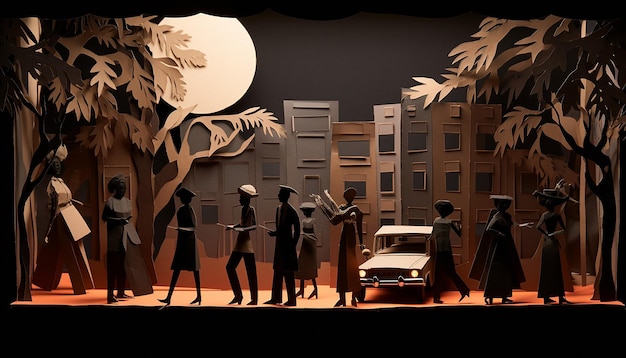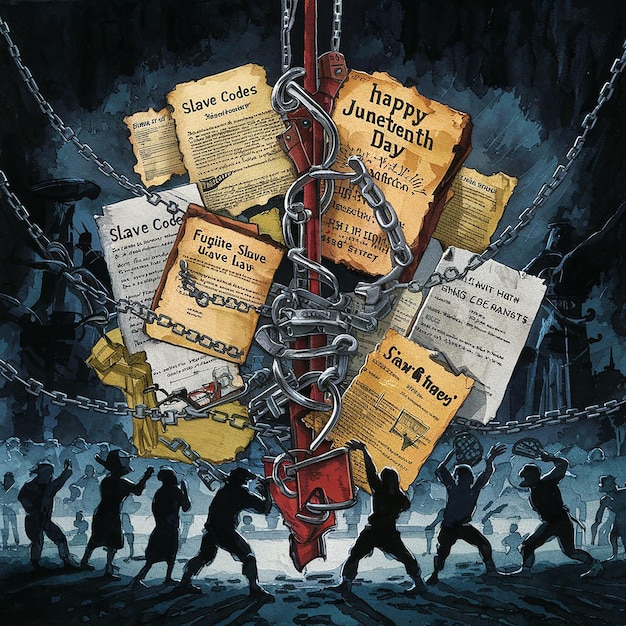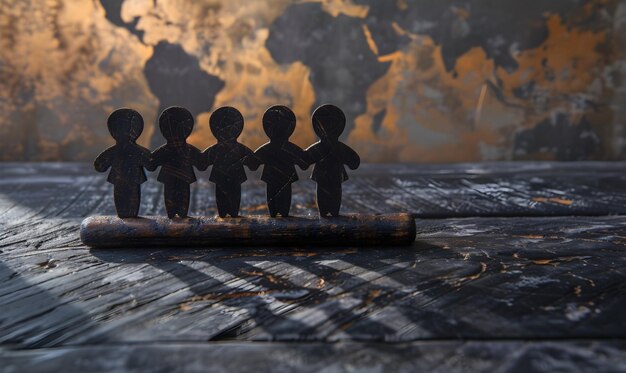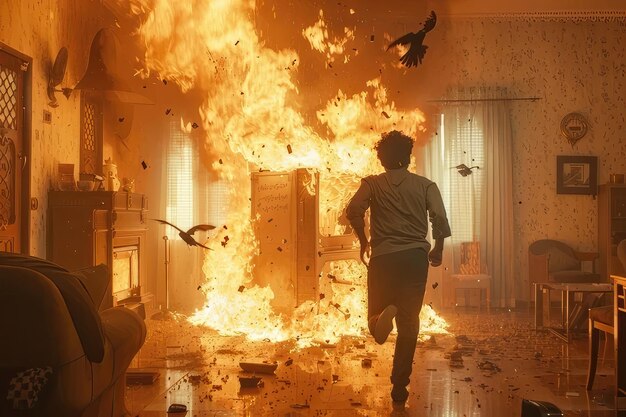A Tragic Labor Day Weekend: The Phoenix Homeowner Shooting Incident
Quick Read
A Tragic Labor Day Weekend: The Phoenix Homeowner Shooting Incident
During the Labor Day weekend in 2020, a tragic and
Phoenix, Arizona
. The incident began on
Monday, September 7th
, when a homeowner named
Mark Patterson
, in his late sixties, reportedly shooted and killed two
uninvited guests
who had entered his property. The visitors, identified as Daniel Rodriguez, 21 and Brandon Smith, 20, were allegedly seeking help with a flat tire.
The
Phoenix Police Department
was called to the scene and initiated an investigation. According to witnesses, Mr. Patterson claimed he had heard suspicious noises near his home and grabbed his gun in fear of intruders. He then encountered Rodriguez and Smith, mistook them for burglars, and fired several shots, hitting both young men fatally.
The shooting left the community in shock and sparked a heated debate over
self-defense
and gun rights. Some residents expressed sympathy for Mr. Patterson, believing that he acted in self-defense based on the information available at the time. Others criticized him for using deadly force against unarmed individuals seeking help, and called for increased community safety measures instead.
As details of the incident emerged, it became clear that
Mr. Patterson
, a retired firefighter and military veteran, had a history of anxiety disorders and
post-traumatic stress disorder
(PTSD). Some experts suggested that his mental health issues might have influenced his reaction to the perceived threat, while others questioned whether adequate mental health resources were accessible to those in need.
The
Phoenix Police Department
completed its investigation and presented the case to the Maricopa County Attorney’s Office for review. Ultimately, no charges were filed against Mr. Patterson. However, the incident served as a stark reminder of the complexities surrounding self-defense, gun ownership, and mental health in modern society.

Labor Day Weekend: A Celebration Turned Tragic
Labor Day weekend, the first Monday in September, is a time-honored tradition in the United States. This holiday was established to recognize the contributions and achievements of the American workforce. Its origins can be traced back to the late 19th century when labor unions sought to secure a day off for their members, giving them a much-deserved respite from their demanding jobs. Over the years, Labor Day weekend has evolved into a symbolic end to summer with various traditional activities and celebrations.
Historical Background
Across the nation, families gather for cookouts and picnics, friends meet up for games and outings, and communities hold parades and festivals. However, this year’s Labor Day weekend in Phoenix, Arizona, took an unexpected turn. The warmth of the sun and the vibrant colors of autumn leaves were overshadowed by a chilling tragedy that left families, friends, and the entire community in shock.
Transition to Tragedy
As the clock struck midnight on Friday night, the air was filled with anticipation for the upcoming weekend. Little did anyone know that their lives were about to take a drastic turn. In the quiet streets of Phoenix, an unimaginable disaster was lurking, ready to shatter the peace and joy that Labor Day weekend usually brings.
Stay Tuned for Updates
Join us as we delve deeper into this tragic event and explore how it impacted the lives of those in Phoenix. Together, let’s honor the spirit of Labor Day weekend and remember the importance of cherishing every moment.

Background of the Shooting Incident
Location and Demographics:
The shooting incident took place in the Retreat at Twin Lakes neighborhood, located in Sanford, Florida. This residential community is situated 10 miles east of Orlando and 25 miles northeast of downtown Orlando. The demographics of the area are diverse, with a population that is approximately 60% White, 31% Black, and 9% Hispanic or Latino. The median household income is around $50,000 per year, and the crime rate is slightly higher than the national average.
Homeowners Involved:
George Zimmerman, a 28-year-old Hispanic man, and his wife Marsha, a 25-year-old White woman, were the homeowners living in the neighborhood at the time of the incident. George was born and raised in Manassas Park, Virginia, and had a background in law enforcement, having previously worked for a private investigative firm. Marsha, originally from Pennsylvania, was a homemaker. The couple moved to Phoenix, Florida, in 2010, seeking warmer weather and a quieter community for their family.
Events Leading Up to the Incident:
In February 2012, George Zimmerman joined the neighborhood watch program in Retreat at Twin Lakes. However, tensions between him and 17-year-old Trayvon Martin, a Black student visiting his father in the area, began to escalate. On the night of February 26, 2012, George reported a suspicious person in the neighborhood to the police non-emergency line, describing Trayvon as “looking up at him” and acting “suspicious.” Despite George’s suggestion that the police follow him to investigate, they advised him not to pursue the individual as it was against department policy.
Neighborhood Watch Program and Tensions
As a neighborhood watch captain, George believed it was his duty to protect the community. However, some residents felt that he had overstepped his bounds by confronting Trayvon, whom they believed was an innocent visitor. The tension between George and the Martin family would soon reach a tragic climax.
Police Response
When the police arrived at the scene, they interviewed George and searched for Trayvon but were unable to locate him. They did not find any signs of a struggle or violence in the area. The police did not arrest George, and no charges were filed at that time.
Initial Investigation
Over the following days, the media began to report on the incident, and public outrage grew as more details about Trayvon’s background emerged. The police investigation continued, but it would be several weeks before new information came to light and the case gained national attention.
I The Shooting Incident
Detailed account of the night of February 26, 2012
On the fateful night of February 26, 2012, in a gated community located in Sanford, Florida, an altercation between George Zimmerman, a neighborhood watch volunteer, and
Forensic evidence and findings from the scene
Forensic evidence collected at the scene sheds some light on the sequence of events. An analysis of the injuries sustained by both parties reveals that
The 9-1-1 call and its significance
The 9-1-1 call made by George Zimmerman on the night of the incident provides crucial insight into the events leading up to the shooting. During the call, Zimmerman reports

The Aftermath
Media attention and public reaction
-
National debate on race, gun laws, and neighborhood safety
The tragic shooting of Trayvon Martin sparked a national debate on various issues including race, gun laws, and neighborhood safety. The media coverage was extensive, with 24-hour news channels providing constant updates and analysis. Social media platforms became a hub for activism and discussion on these topics, with the hashtag #BlackLivesMatter gaining significant traction.
Legal proceedings and trial of George Zimmerman
-
Charges, arrest, and bail
Following the shooting, George Zimmerman, the neighborhood watch coordinator who fatally shot Martin, was charged with second-degree murder. He was later released on bail. The trial proceedings were closely watched by the media and the public, with both sides presenting their cases to the jury.
The verdict and its impact on the community and nation
-
Reactions from various groups and individuals
The verdict, which found Zimmerman not guilty, sparked reactions from various groups and individuals. Some celebrated the decision as a victory for self-defense, while others expressed anger and disappointment. Protests were held in cities across the country, with some turning violent.
-
Analysis of legal, social, and moral implications
The trial and its outcome raised important questions about the legal system, race relations, and personal responsibility. Some argued that the verdict highlighted the need for gun law reform, while others criticized the prosecution’s strategy and questioned whether Zimmerman had acted in self-defense. Regardless of one’s perspective, it was clear that the case had left a deep mark on the nation’s consciousness.

Conclusion
The Phoenix Mall Shooting, an unfortunate event that unfolded on a sunny afternoon in 2016, left the community of Phoenix and beyond in shock. The
tragic incident
, which resulted in several fatalities and injuries, brought the issue of gun violence and community safety to the forefront.
Reflection on the Tragedy and Its Lasting Effects
It is important to reflect on the aftermath of this tragedy and consider the lessons we can learn from it. The incident underscored the importance of being vigilant in public spaces, and the need for open dialogue and understanding in times of conflict and tragedy. It also highlighted the need for increased awareness regarding mental health and the warning signs of potential violence.
Lessons Learned
The Phoenix Mall Shooting provided valuable lessons for law enforcement, community leaders, and the general public. One of the most significant takeaways was the need for improved communication between law enforcement agencies and the communities they serve. It also emphasized the importance of mental health resources and support systems, as well as the role they play in preventing such incidents.
Changes in Neighborhood Safety Initiatives, Gun Laws, or Community Relations
In the aftermath of the shooting, there were several changes in neighborhood safety initiatives, gun laws, and community relations. Local law enforcement agencies increased their presence in public spaces to provide reassurance and deter potential threats. City officials also implemented new safety measures, such as improved emergency response systems and enhanced security protocols at public facilities.
Gun Laws
At the state level, lawmakers proposed new gun control measures in response to the shooting. Some of these proposals included stricter background checks and increased penalties for illegal possession of firearms. While these initiatives did not pass, they sparked important conversations about gun safety and the role of legislation in preventing gun violence.
Community Relations
The Phoenix Mall Shooting also led to improved community relations, as residents came together in the wake of the tragedy to support one another. Local organizations and businesses provided resources for mental health counseling and other forms of assistance to those affected by the shooting. Community leaders also worked to foster greater dialogue between law enforcement agencies and the community, with a focus on building trust and understanding.
Final Thoughts
The Phoenix Mall Shooting was a tragic reminder of the importance of open dialogue, understanding, and community engagement in times of conflict and tragedy. While no single event or policy can completely eliminate gun violence, it is crucial that we continue to learn from past incidents and work together to create a safer, more inclusive future.

